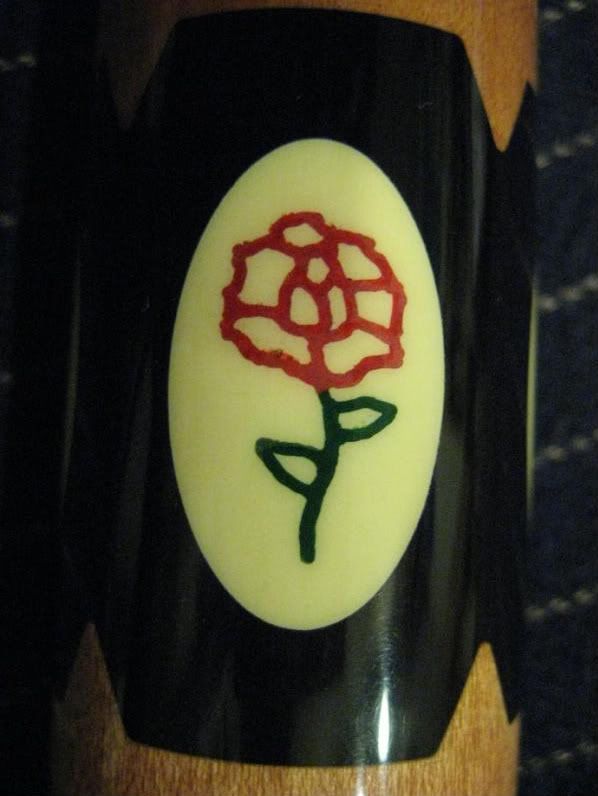So you're sitting there with a cue in your hands while counting inlays... What would you classify as an inlay and what you would not? There are some things that sit in gray space where some would argue as being an inlay and some would say it isn't. Just thought I'd throw that question out there since we've seen quite a few collector questions lately.
I, myself, have a good idea, but would like to see what others have to say. There are the obvious and there are the not so obvious.
To use an example, here is a TAD cue from the J&J Cue website.

Just one window alone, I count 26 inlays: 24 veneer inlays, 1 ebony window inlay, and 1 notched diamond inlay. Correct me if I'm wrong, looking to get the counting right.
For the rings, would you count the ebony inset between the micarta and the MOP if the base of the ring is made of ebony?
The description would depend on how you want to sell the cue. What you really have would depend on the feelings of the person with the cue. For example:
Rings: Each one of those "ringsets" appears to be a three piece ring. The center has a larger ring proportionally cut to look like a square, where the smaller rings are cut to be dashes. However in my description as a seller I would list that as well as say there are 24 pieces of ivory in each ringset with 8 ebony inlays and 8 MOP inlays. But notice I said "pieces" of ivory and not inlays. So in the butt of that cue you have 2 ringsets, 48 pieces of ivory as well as 16 ebony inlays and 16 MOP inlays.
If the boxes are inlaid as one piece units, which I believe they are, they are one inlay with an ivory slotted diamond inlaid. But you could expand on that description as well. They are stacked veneer boxes and not mitered. Each box uses 20 pieces of veneers as well as the ebony center. Each box would then contain 22 pieces.
As a seller I would use all of this to my advantage during a sale in a very descriptive way. I would let the reader determine what all this means to them in the purchase of the cue.
FTR - that would only be if the cue is ivory, obviously...
JV


